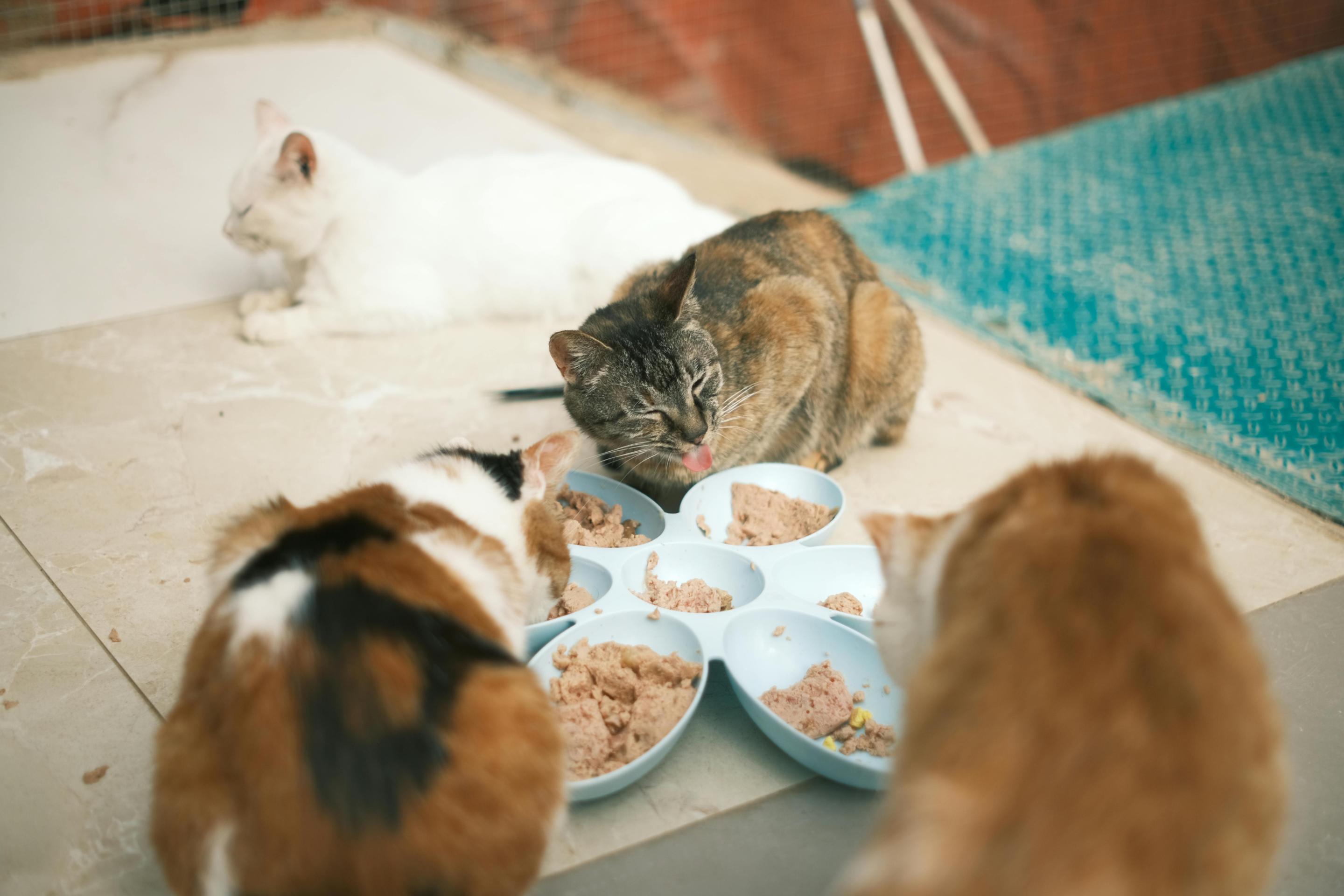As a cat owner, choosing the best food for your feline friend can feel overwhelming. The market offers a dizzying array of options, but one of the biggest decisions you'll face is whether to feed your cat wet food, dry food, or a combination of both. Let’s break down the pros and cons of each to help you make an informed decision.
Wet Cat Food
Wet cat food, also known as canned food, is made up of high moisture content—typically around 70-80%. It’s available in a variety of textures, such as pate, shredded, or chunks in gravy.
Benefits of Wet Cat Food
-
Hydration Support: Cats have a low thirst drive because their ancestors originated from desert environments. Wet food provides additional hydration, which is especially important for cats prone to urinary tract or kidney issues.
-
Palatability: Many cats find wet food more appealing due to its strong aroma and soft texture, making it a great choice for picky eaters or senior cats with dental issues.
-
Lower Caloric Density: Wet food typically contains fewer calories per gram, which can help with weight management, especially for overweight or less active cats.
-
High Protein Content: Wet food is often rich in high-quality animal protein, which supports muscle maintenance and overall health.
Drawbacks of Wet Cat Food
-
Cost: Wet food is generally more expensive than dry food, particularly if fed exclusively.
-
Short Shelf Life: Once opened, wet food needs to be refrigerated and used within a day or two to prevent spoilage.
-
Dental Health: While wet food is easier to eat, it doesn’t provide the chewing action that can help reduce tartar buildup on teeth.
Dry Cat Food
Dry cat food, or kibble, is a low-moisture option that’s convenient to store and feed. It typically contains around 10% moisture and comes in a variety of sizes and flavors.
Benefits of Dry Cat Food
-
Convenience: Kibble is easy to store, has a longer shelf life, and doesn’t require refrigeration once opened. It’s also less messy than wet food.
-
Dental Health: While not a substitute for brushing, the crunchy texture of dry food can help reduce plaque and tartar buildup by promoting chewing.
-
Cost-Effective: Dry food is typically more affordable and can be purchased in bulk, making it a budget-friendly option for many cat owners.
-
Free-Feeding Option: Dry food is ideal for free-feeding—leaving food out for your cat to graze on throughout the day—as it doesn’t spoil as quickly as wet food.
Drawbacks of Dry Cat Food
-
Low Moisture Content: Cats that eat only dry food may not get enough water, which can increase the risk of dehydration, urinary tract issues, and kidney problems.
-
Higher Caloric Density: Kibble is calorie-dense, so it’s easier for cats to overeat, leading to weight gain if portions aren’t carefully controlled.
-
Less Palatable: Some cats may find dry food less appetizing compared to the aroma and texture of wet food.
Which Is Better for Your Cat?
The best choice ultimately depends on your cat’s individual needs, preferences, and lifestyle. Here are some factors to consider:
-
Health Conditions:
-
Cats with urinary or kidney issues may benefit from the increased hydration provided by wet food.
-
Obese or overweight cats may do better with the lower caloric density of wet food.
-
Cats with dental problems may find wet food easier to eat, while those with healthy teeth may benefit from the chewing action of dry food.
-
-
Age and Activity Level:
-
Kittens and active cats with higher energy needs may thrive on calorie-dense dry food.
-
Senior cats or less active cats may benefit from the hydration and protein in wet food.
-
-
Budget:
-
Wet food can be more expensive, so a combination of wet and dry food may be a cost-effective way to provide variety and meet your cat’s nutritional needs.
-
-
Preference:
-
Some cats have strong preferences for one type of food. Pay attention to your cat’s eating habits and adjust accordingly.
-
A Balanced Approach
Many veterinarians recommend a mixed feeding routine, combining both wet and dry food to provide the benefits of each. For example:
-
Offer wet food during meals to ensure hydration and provide a tasty, high-protein option.
-
Leave out a measured amount of dry food for grazing throughout the day.
This approach ensures your cat gets a variety of nutrients while catering to their natural feeding behaviors.
There’s no one-size-fits-all answer to the wet vs. dry cat food debate. The key is to provide a balanced, high-quality diet that meets your cat’s unique nutritional needs. If you’re unsure which option is best for your feline friend, consult with your veterinarian. They can provide personalized recommendations based on your cat’s age, weight, health, and activity level.
If you have questions and you'd like to reach out to us, you can call us directly at (602) 833-7511, or you can email us at [email protected]. Don't forget to follow us on social media Facebook, Instagram.

